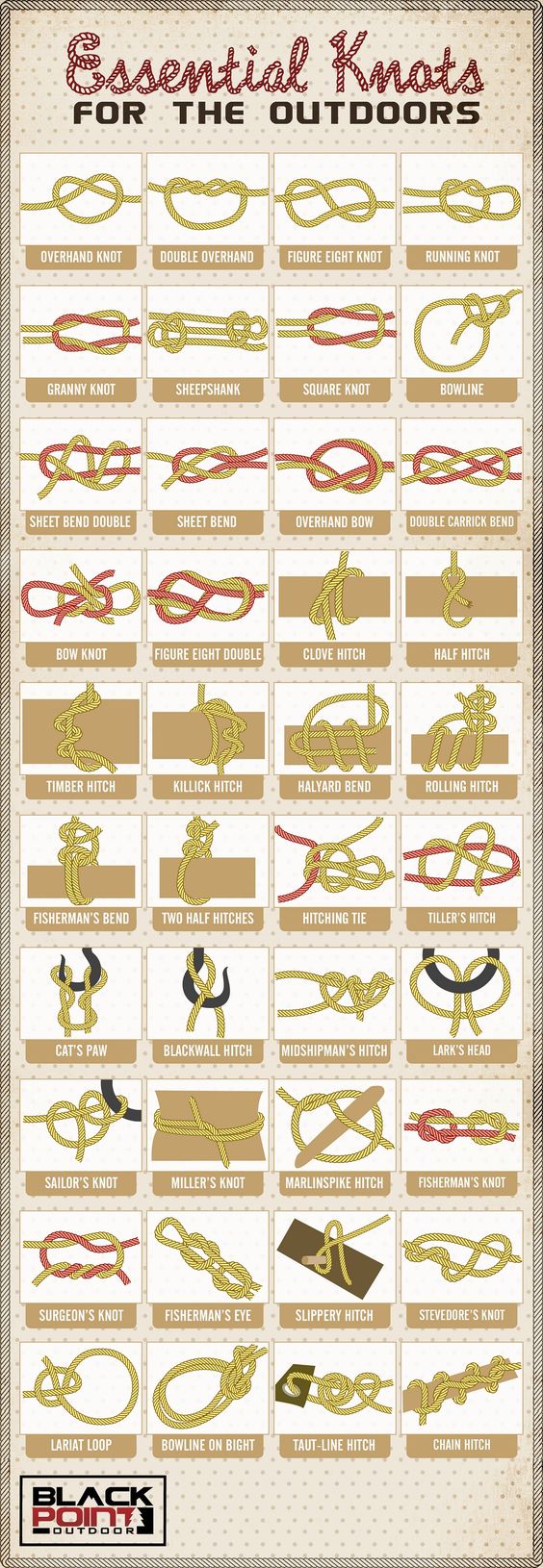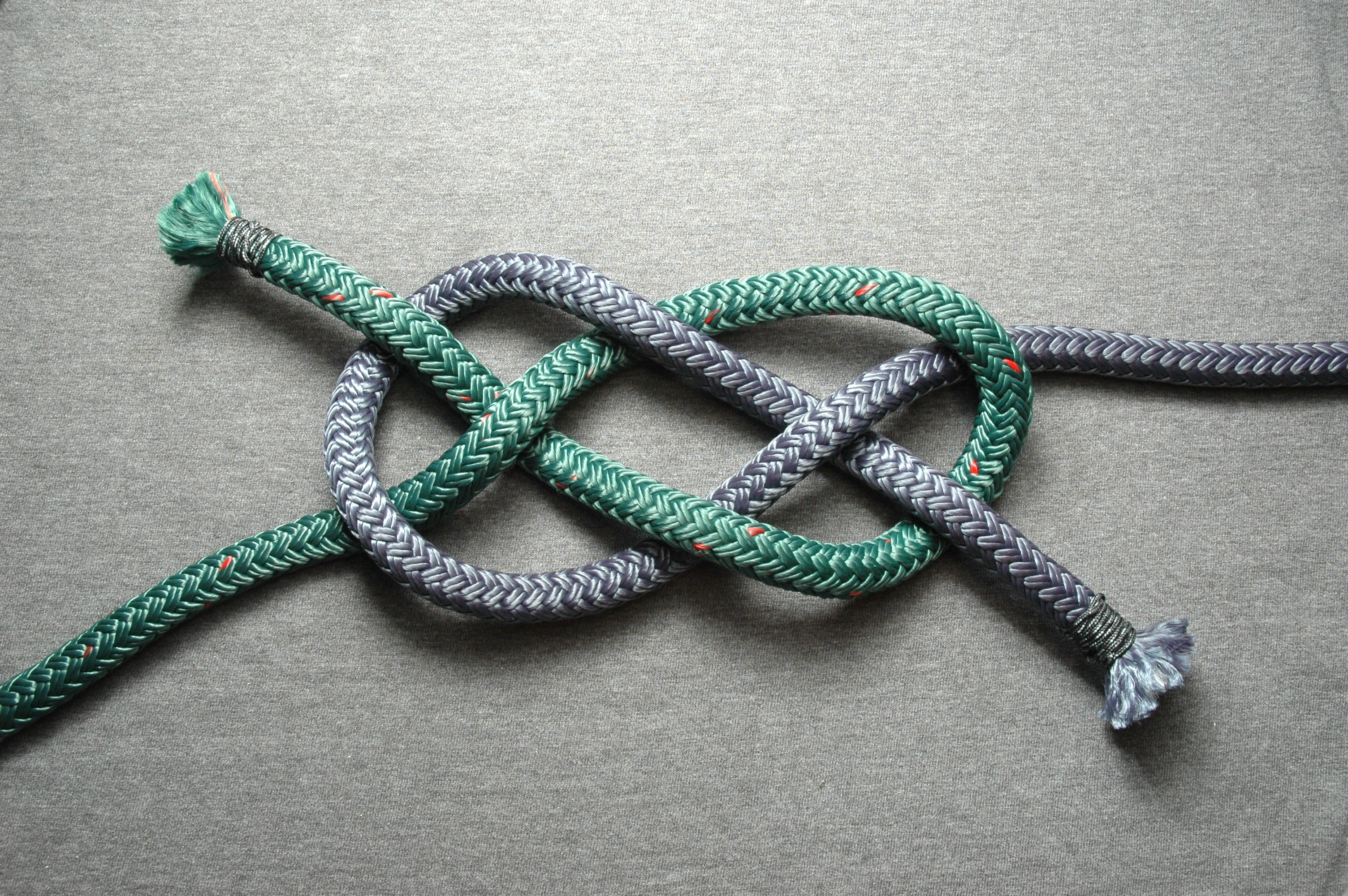Knowing how to tie different knots is a lost art, but its one that can make or break your survival experience. Being skilled in knot-tying can help you create makeshift fishing gear, make traps for hunting, set up camps and improvised tents, keep your gear secure, hidden, or propelled to higher places, or help you set up many other kinds of improvised rigs to keep you safe and alive in a survival or wilderness situation.
What it takes is practice, practice, practice. Simply looking at this infographic won’t help you unless you grab yourself some twine and try them out. The key is repetition, it’s one thing to learn to tie a knot, its another to memorize it and be able to do it quickly. One great way to learn knots is to keep some twine attached to your bag, backpack, keychain, or something else you have with you regularly, and simply practice tying knots in your downtime. On the subway, while watching TV or on the phone, whenever you’ve got your hands free and some time to kill.
The objective is to memorize with your muscles the sensation of the twine and the movements of the knots so that your fingers instinctively know the motions to make that will secure a knot quickly and securely. And again, the only way to really internalize this is practice.
But of course, the point of this post is to introduce you to the knots you need to know. This very useful infographic was originally published here, and covers a wide variety of basic knots for different outdoor situations. It’s a great basic guide to the knots you should know for survival. Enjoy!



